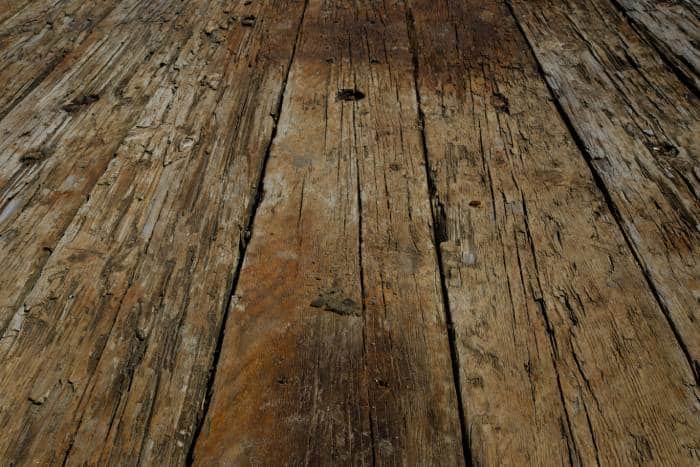
Wood Rot: A Serious Threat to Your Home’s Integrity
Wood rot is a significant issue that affects countless homes across the United States, causing billions of dollars in damage annually. This pervasive problem can compromise your home’s structural integrity if not addressed promptly. However, with early detection and proper repair techniques, you can protect your investment and ensure your home remains safe and beautiful for years to come. This comprehensive guide will help you identify, repair, and prevent wood rot effectively.
Identifying Wood Rot: Key Signs to Watch For
1. Visual Inspection: One of the first steps in identifying wood rot is a thorough visual examination. Look for wood that appears discolored, darkened, or has taken on a white or yellowish hue. Cracking, peeling, or blistering paint can often indicate rot underneath the surface. Pay close attention to areas where wood meets the ground, as these are particularly susceptible to rot.
2. Texture Check: Rotted wood typically feels soft and spongy to the touch. Use a screwdriver or a similar tool to gently probe suspicious areas. If the wood feels mushy or easily breaks apart, it’s likely affected by rot. Remember to be cautious during this check, as applying too much pressure might cause further damage if rot is present.
3. Smell Test: Wood rot often produces a distinct musty, damp odor. If you notice a persistent earthy smell in certain areas of your home, it’s worth investigating further for hidden rot. This smell is particularly noticeable in enclosed spaces or areas with poor ventilation.
4. Moisture Hotspots: Focus your inspection on areas prone to moisture accumulation. Common hotspots include areas around windows, doors, roofs, and any place where water might collect or seep in. Basements, crawl spaces, and attics are also frequent sites for wood rot due to their tendency to trap moisture.
Understanding the Causes of Wood Rot
To effectively prevent and address wood rot, it’s crucial to understand its primary causes:
Moisture
Prolonged exposure to water is the leading cause of wood rot. This can result from various sources, including leaks in plumbing or roofing, poor drainage around the foundation, or high humidity levels in poorly ventilated areas. In fact, a startling statistic reveals that 14,000 Americans experience a water damage emergency at home or work each day, highlighting the prevalence of moisture-related issues.
Poor Ventilation
Areas with little air circulation, such as attics, basements, and crawl spaces, are more susceptible to wood rot. Stagnant air allows moisture to accumulate, creating an ideal environment for rot-causing fungi to thrive.
Untreated Wood
Using untreated or poorly treated wood in high-moisture areas can lead to quicker deterioration. While all wood can eventually succumb to rot if exposed to the right conditions, untreated wood lacks the protective barriers that can slow this process.
Fungal Growth
Wood rot is caused by various types of fungi that feed on wood fibers. These fungi require moisture to grow and spread, which is why addressing water issues is crucial in preventing and stopping wood rot.
Repairing Wood Rot: A Step-by-Step Guide
When you’ve identified wood rot in your home, it’s essential to address it promptly. Here’s a detailed guide to repairing wood rot:
1. Safety First: Before beginning any repair work, ensure you’re properly protected. Wear gloves, goggles, and a dust mask to shield yourself from mold spores and other harmful particles that may be present in rotted wood.
2. Remove Damaged Wood: Using appropriate tools such as a chisel, saw, or multi-tool, carefully remove all rotted wood. It’s crucial to cut back to healthy wood, ensuring you have a solid base for repairs. Be thorough in this step, as leaving any rotted wood can allow the problem to persist.
3. Treat Surrounding Wood: Once you’ve removed the rotted sections, apply a wood hardener to the surrounding area. This treatment helps strengthen the remaining wood and can prevent further deterioration. Follow the manufacturer’s instructions carefully for the best results.
4. Fill the Gaps: After treating the surrounding wood, use an epoxy wood filler to rebuild the removed sections. Epoxy fillers are durable and can be molded to match the original shape of the wood. Apply the filler in layers if necessary, allowing each layer to cure fully before adding the next. This process may take several hours or even overnight, depending on the product and environmental conditions.
5. Sand and Smooth: Once the filler has completely cured, sand the repaired area to achieve a smooth surface that matches the surrounding wood. Start with a coarse-grit sandpaper and progressively move to finer grits for the best finish. Ensure the repaired area is flush with the surrounding surface and ready for finishing.
6. Prime and Paint: To protect the repaired area from future moisture damage and UV exposure, apply a high-quality primer followed by exterior-grade paint or stain. This final step not only protects the wood but also helps the repair blend seamlessly with the rest of the structure.
Preventing Future Wood Rot
Taking proactive measures to prevent wood rot can save you time, money, and stress in the long run. Here are some effective prevention strategies:
Maintain Gutters and Downspouts: Ensure your gutters and downspouts are clear of debris and properly directing water away from your home’s foundation. This simple maintenance task can significantly reduce the risk of water damage and subsequent wood rot.
Seal Cracks and Gaps: Regularly inspect your home’s exterior for cracks or gaps that could allow water intrusion. Seal these openings promptly with appropriate materials to keep moisture at bay.
Improve Ventilation: Enhance air circulation in enclosed spaces like attics, basements, and crawl spaces. Consider installing vents or fans to promote airflow and reduce moisture buildup.
Use Treated Wood: When replacing or adding wooden elements to your home, especially in areas prone to moisture, opt for pressure-treated or naturally rot-resistant wood species.
Regular Inspections: Conduct thorough inspections of your home periodically, especially after storms or heavy rainfall. Early detection of potential issues can prevent minor problems from escalating into major repairs.
Address Leaks Promptly: If you discover any leaks in your plumbing or roofing, repair them immediately to prevent water damage and potential wood rot.
Why Professional Help Matters
While many homeowners can handle minor wood rot repairs, extensive damage or rot in critical structural elements often requires professional intervention. At R&D Painting, based in Garner, NC, we specialize in identifying, repairing, and preventing wood rot. Our team of experts brings years of experience and a commitment to quality workmanship to every project.
Choosing professional help for wood rot issues offers several advantages:
Expertise and Experience: Our professionals are trained to identify even subtle signs of wood rot that may not be apparent to the untrained eye.
Comprehensive Solutions: We offer complete solutions, from initial assessment to repair and prevention strategies tailored to your home’s specific needs.
Quality Materials: We use high-quality, durable materials for repairs, ensuring long-lasting results.
Time and Cost Efficiency: Professional intervention can often save time and money in the long run by addressing issues thoroughly and preventing future problems.
Don’t let wood rot compromise your home’s integrity. If you suspect wood rot or want to proactively protect your home, contact R&D Painting today. Call us at (919) 669-6459 or contact us online to schedule a free consultation and estimate. Let our experts help you maintain a safe, beautiful, and rot-free home for years to come.
